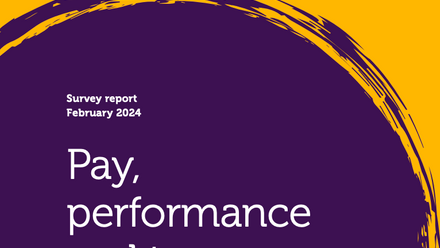4 key factors to consider when planning your 2016 pay review

1) Economic factors
According to latest figures from ONS:
- GDP is continuing to grow steadily with an increase of 0.5% in the last quarter
- Employment levels of 74% are the highest since records began in 1971
- Inflation continues to sit around zero with CPI at 0.2%
But UK businesses continue to be cautious in the face of an uncertain world economy, and a struggle with productivity.
Similar to previous years, we’re still seeing 2-3% salary increase pots (Paydata).
2) National Living Wage
The National Living Wage (NLW) forms part of the government vision to move to a higher wage, lower tax and lower welfare society.
Set at £7.20, it’s a 50p increase on the current Minimum Wage and will apply to all employees aged 25+ from 1 April 2016.
Increases at the lowest level will have a ‘trickle up’ effect. It’s important to retain a differential for other levels, especially where pay progression is tight.
This represents a significant increase to payroll costs in 2016, and over the next four years. The NLW target is 60% of median earnings by 2020. PwC estimate this will reach around £9.35.
3) Living Wage
The Living Wage differs from the NLW. It’s a measure of income needed for an acceptable standard of living, rather than a percentage of median earnings. And it’s voluntary.
Calculated by the Living Wage Foundation, it stands at £8.25 (£9.40 in London).
Given that the compulsory NLW will soon overtake the Living Wage anyway outside of London, smart employers will be looking carefully at the ROI of signing up now, with the added kudos of being ahead of the pack.
4) Gender pay reporting
The draft Equality Act 2010 (Gender Pay Gap Information) Regulations 2016 have just been published. Employers in the private and voluntary sector with 250+ employees will be required to calculate their gender pay gap from April 2017, and publish it from April 2018.
A pay gap is one of the ways that talent assesses your attractiveness. 66% are unlikely to apply to work for an organisation that they believe has a gender pay gap, according to Glassdoor.
An audit of equal pay is only a start to ensure you are paying fairly for equal work. This is the first call on your pay review budget. Going forward, most will require a broader diversity action plan to close the gender pay gap.
What needs to be done?
- Budget pay carefully for 2016 - consider the impact at higher levels and costs such as pension and NI.
- Model pay forecasts for the next four years - the cost may be higher than anticipated.
- Consider your pay strategy - is it time to commit to the Living Wage?
- Check for equal pay - budget for, and address, any anomalies.
- Develop robust pay structures - this will simplify budgeting and provide a foundation for fair, consistent and transparent decisions.
- Review how pay is made up - the NLW applies after any salary sacrifice deductions, and doesn’t include allowances or premiums. It may help to consolidate additional elements into base pay.
- Consider how best to adapt and fund increases in base pay through variable schemes (e.g. bonus) and investment in people and technology.
How are you doing?
This article was provided by Samantha Gee, director of Verditer Consulting.






